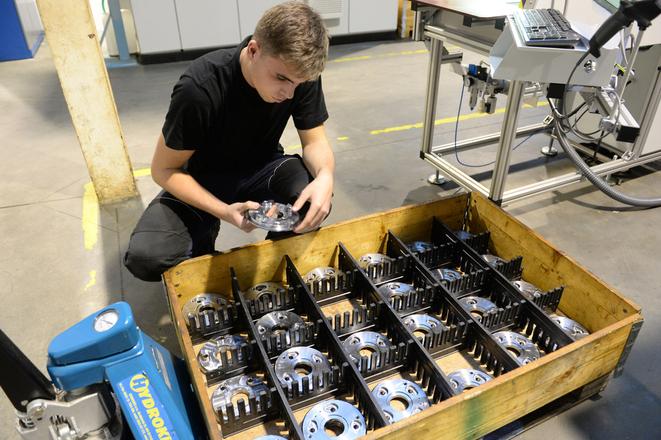The proposed increase in the R&D tax allowance from 25 percent to 100 percent of expenditures will not help Slovakia solve the lack of R&D investments. This is confirmed by recent state aid use statistics. Slovakia needs to fundamentally change its attitude towards R&D support in the private sector, otherwise it will keep lagging behind advanced European countries and risks sharp decline in its economic performance in the future.
The current EU funding scandal for R&D projects worth €300 million illustrates the problem of Slovakia very accurately – a chaotic approach to research support. The state itself spends few financial resources on research and the EU funds that could help substantially are distributed in a non-transparent way. Slovakia also fails to motivate firms to invest in research; moreover, rules are set in favor of bureaucracy.
The proposed increase in R&D tax allowance from the current 25 to 100 percent of expenditures on R&D will not change anything about poor research support. Grant Thornton analysis of drawing the tax allowance in 2015 implies that the problem is not in the allowance rate but in the conditions for drawing funds and in insufficient support.
For example, companies must provide a relatively detailed description of the project to which they have applied the tax allowance, and this information is subsequently published by the Financial Directorate on their website. Thanks to that anyone knows who works on what research and development and thus, in a highly competitive environment, companies are losing their competitive advantage. Even this detail can discourage the companies from using the tax allowance.
So to sum it up, raising the tax allowance rate is of course a positive step, but alone, it will not be sufficient. The conditions for its allocation including disclosing information need to be altered.
Entrepreneurs invested €232.34 million into research and development in 2015; however, they only applied the tax allowance in less than 16 percent of the expenditures.
We at Grant Thornton have been doing tax consultancy in Slovakia for more than twenty years. From our experience, it is clear that companies utilize any tax advantage provided that it is not set bureaucratically. Companies investing in research did not apply nearly half of the relevant expenditures. This indicates the wrong setting of the system.
Drawing of tax allowance by companies in 2015
Investment on research in € | |
Total investment on research | €927.27 mil. |
- thereof business sector | €232.34 mil. |
Tax allowance companies could apply (25 %) | €58.08 mil. |
Tax allowance companies actually applied only | €9.20 mil. |
Source: „Správa o stave výskumu a vývoja v Slovenskej republike a jeho porovnanie so zahraničím za rok 2015“ - Ministry of Education, Science, Research and Sport of the Slovak Republic
Solution: transparent rules and support for companies' investment projects
Slovakia has to fundamentally change the approach to research support. The goal of the state must be to make private sector the primary puller of R&D, as is the case in developed European countries. Firms can transfer innovations into practice faster and create a higher added value that the Slovak economy inevitably needs. There are several solutions how to motivate businesses. The essential one is special support for R&D investments, for example in the automotive industry.
For comparison: the revenues of the Austrian car industry are higher than those in Slovakia (€40 billion), without a single finishing plant operating in Austria. The reason is technological companies that develop hi-tech solutions for production machines. An example of such a company is Spinea, whose reducers are essential to basically any maker of industrial robots.
Expenditures on R&D in bn. € | ||||||
2006 | 2009 | 2012 | 2015 | GDP 2015 (bn. €) | % GDP on research | |
Czech Republic | 1.527 | 1.925 | 2.877 | 3.250 | 169 | 1.95 % |
Hungary | 0.900 | 1.067 | 1.257 | 1.511 | 115.7 | 1.30 % |
Poland | 1.513 | 2.096 | 6.430 | 4.317 | 430 | 1.00 % |
Slovakia | 0.217 | 0.303 | 0.585 | 0.927 | 76.521 | 1.21 % |
Austria | 6.319 | 7.480 | 9.288 | 10.444 | 340 | 3.07 % |
Finland | 5.761 | 6.786 | 6.832 | 6.071 | 209 | 2.9 % |
Source: Eurostat
Silvia Hallová is tax consultant and partner at Grant Thornton Slovakia
Author: Silvia Hallová


 The Spinea company in Prešov (source: TASR )
The Spinea company in Prešov (source: TASR )